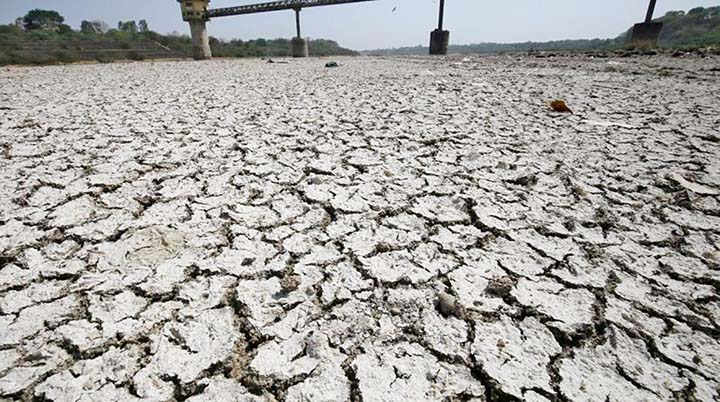
Agencies, Washington :
A quarter of the world’s population across 17 countries are living in regions of extremely high water stress, a measure of the level of competition over water resources, a new report reveals.
Experts at the World Resources Institute (WRI) warned that increasing water stress could lead to more “day zeroes” – a term that gained popularity in 2018 as Cape Town in South Africa came dangerously close to running out of water.
Qatar, Israel and Lebanon were ranked as the most water stressed countries in the world, with Badghis in Afghanistan and Gaborone and Jwaneng in Botswana the world’s most water-stressed regions.
WRI said the data reveals a global water crisis that will require better information, planning and water management.
“Water matters,” said Betsy Otto, global director for water at WRI. “We’re currently facing a global water crisis. Our populations and economies are growing and demanding more water. But our supply is threatened by climate change, water waste and pollution.”
The global research organisation compared the water available to the amount withdrawn for homes, industries, irrigation and livestock.
In the 17 countries facing extremely high water stress, agriculture, industry, and municipalities were found to be using up to 80% of available surface and groundwater in an average year. When demand rivals supply, even small dry spells, which are set to increase because of the climate crisis, can produce dire consequences. Twelve of the 17 high-risk countries were in the Middle East and North Africa.
The level of water stress in India, a country of more than 1.3 billion people, was striking, experts noted. India ranked 13th in the report. In July, taps in the southern city of Chennai ran dry and satellite photographs showing an empty lake in the city went viral on social media. “The recent water crisis in Chennai gained global attention, but various areas in India are experiencing chronic water stress as well,” said Shashi Shekhar, former secretary of India’s ministry of water resources, and senior WRI fellow.
Although the US did not have high levels of water stress overall, a handful of states – including New Mexico and California – were found to be facing significant strains on their water supplies that will only intensify with global heating.
New Mexico was found to have “extremely high” pressure on water availability. The state’s score is on par with the United Arab Emirates and Eritrea.
In 2012, two-thirds of the US experienced drought, said Brad Rippey, a meteorologist for the Agriculture Department.
California, which experienced a drought in 2011 that did not subside until a couple of years ago, is expected to see huge population growth, while facing temperatures up to five degrees warmer and rising sea levels, said Joaquin Esquivel, chair of the California Water Resources Control Board.
World Bank research has emphasised that “while the consequences of drought are often invisible, they are significant and cause ‘misery in slow motion”.

